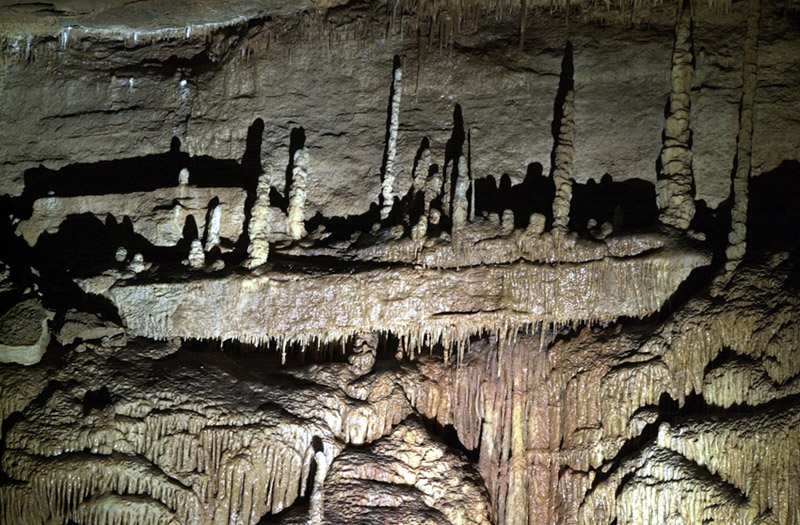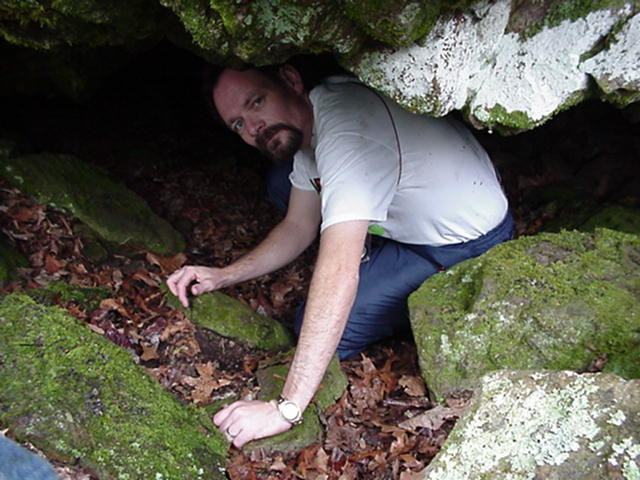By Dr. Curtis Varnell
Cold water dripped on my shoulder and slid down my back. The walls were slippery and my feet held little traction as I slid down the rope, repelling into the darkness of Copperhead cave. Dr. Van Brahana, my geologist friend from the University of Arkansas, had assured me that the cave was one of the most spectacular in Arkansas. Located on Camp Orr road off AR. 74 west, the cave is about a mile long, consists of multi-levels, and has a stream running through a big portion of it. In company with several geology students, we descended some twenty-foot only to find ourselves ankle deep in 55-degree water. Flashlights illuminated vast and beautiful stalactites and stalagmites, glistening like alabaster down the passageway. The water increased in depth as we made our way downward, eventually ending in a torrent pouring from a break in the wall. With Brahana’s assurance that more passages awaited, we dove headfirst into the stream, struggled through the current, and eventually popped up in an adjoining room. Hours later, we retraced our steps, freezing and exhausted from our exploration. Exploring Copperhead Cave was indeed an experience of a lifetime!

Arkansas has more than 2,000 documented caves. Most of the larger caves are found in the north-central and northwest part of the state where limestone is located. Limestone is dissolved as it reacts with acidic water, leaving large cavities within the earth. Many of Arkansas caves are living caves meaning that water is still flowing through the cave and creating new features. Some caves are found in other parts of the state but are generally small and found where breaks in the rock have caused rock formations to move and form small hollows and openings. Caves of this sort are found on Rich, Nebo, Petit Jean, and Magazine Mountains.
Man has always been curious about caves. Artifacts and even the remains of Native Americans have been found in many of the caves. Early settlers explored many of the caves and extracted the bat guano and other minerals. During the Civil War, nitrates were extracted from the materials and used to produce gunpowder. Later, fugitives from the law were said to have used many of the caves as hideouts. Virtually every small community has some story associated with hidden gold, left by Jessie James, Belle Star, or some other desperado.

There are several caves in Arkansas that have been developed for those who want to visit the underworld but have no desire to do it crawling around on their stomachs in the darkness. Two of the larger private ones in the state were Diamond Cave, found near Jasper, and Wonderland Cave. During the 60’s and 70’s, Diamond cave was a popular tourist attraction. It was privately owned and operated and consisted of a campground as well as the cave itself. Visitors followed the tour guide through rooms filled with odd shaped deposits of calcite. Light bulbs, strung in strands, lit the way down into the earth. The most exciting moment was when the guide turned out the light, letting you experience darkness so complete you could not see the hand in front of your face. It is now closed to the public.
Blanchard Springs Cavern, found near Mountain View and operated by the U.S. Forest Service can compete in beauty and size to the better-known Mammoth and Carlsbad caverns. The cave tours offer visits to huge caverns, hundreds of feet across as well as views of mountains of glistening calcite in all kinds of shapes and sizes. The battleship formation is one of the most unique in the world. Soda straws and icicles of rock
hang from the ceiling, still dripping water onto the floor below. They even offer a “wild” tour for those wishing to try the real experience.
Whether you explore a cave on your own or go on one of the many guided tours offered at Bull Shoals Caverns, Hurricane River Cave, Mystic Caverns, Onyx, Old Spanish Treasure Cave, War Eagle, or a multitude of others, it is always a unique and exciting experience as you discover the world that exist beneath our feet.






